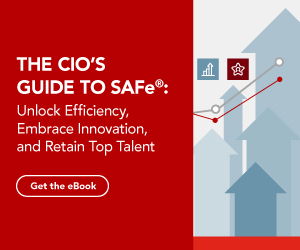
To enable your teams to build great software, start by identifying and empowering your Value Stream Architect.
The Age of Software is not only creating new markets and disruptors in existing markets; it’s also expanding existing roles within organizations. In this post, I’ll describe what I see as one of the most important new roles that is emerging from complex software delivery: the Value Stream Architect.
The traditional roles of both technology and business executives are rapidly changing. In the software-centric world, the business increasingly relies on technology not only to keep the lights but also for long-term sustainable growth. Software is the key to both operational excellence and innovation.
Technologists require buy-in, time and understanding from the boardroom to successfully navigate their organization’s digital transformation through uncharted and increasingly volatile waters. On paper, this sounds very obvious and simple. But as many leaders at large organizations are starting to realize, bridging the gap between IT and the business is a journey that is very difficult to navigate with today’s approaches. Their struggle is making it so easy for the digital-natives to move in on their customers and markets.
We’re living in a time of glitzy new tools and methodologies such as Agile and DevOps to accelerate the business value of software delivery. Yet the gap between modern technical practices and the business is wider than ever, meaning business value can get lost or unrealized. The speed and quality benefits of these IT practices are often only felt at a localized level, say within development. An agile team may be building and submitting high quality code faster, but is the business benefit clear? Are the business and IT even speaking the same language? Is the link between technology advances and business benefits clear and tangible?
Tech giants know the answer to this question. They have complete end-to-end visibility over their software delivery value streams. They architect their continuous delivery pipeline to accelerate the end-to-end flow of business value from customer request to delivery and back through the customer feedback loop. In fact, the very core of these digital-native companies is their software delivery pipeline.
Traditional enterprises, on the other hand, are forced to re-architect their software value streams around their existing business models. It is perhaps one the biggest technical and business challenges they face, which is why a new role is emerging – the Value Stream Architect – one that not only understands how business value is delivered through large-scale software delivery, but someone who also knows how to speak both the language of the business och the technologist.
In my recent article for TheNewStack – “The Age of Software Needs Value Stream Architects” – I delve into what a Value Stream Architect is and why they are necessary for an organization to be able to compete with digital disruption to survive and thrive in the next decade.




